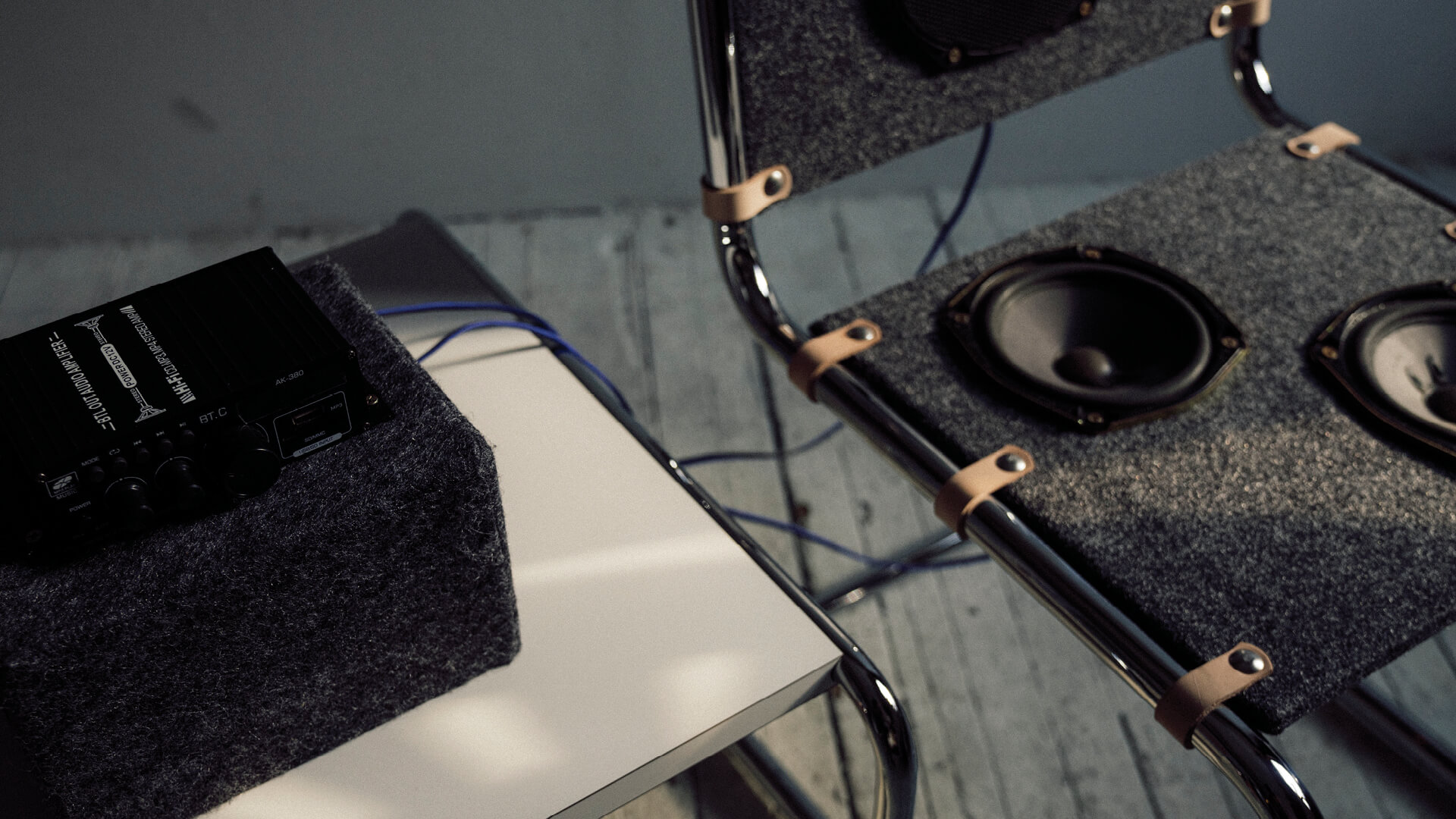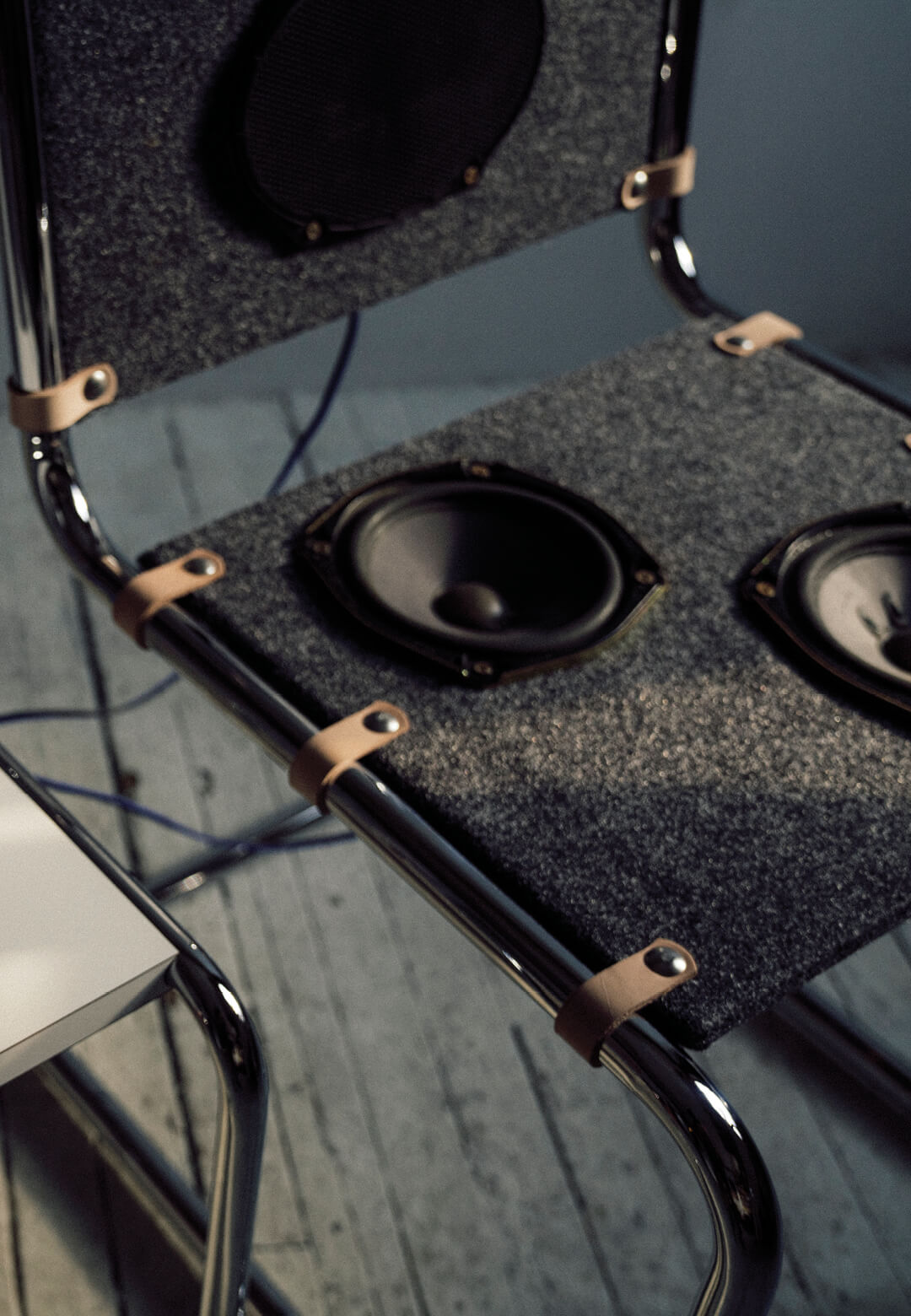Hailing from Chicago, Noel Mercado has a practice grounded in playful found object modification, that typically places artistic expression above utilitarian value. He works from a position of creative freedom, producing pieces that are first and foremost works of art. While several of his installations are characterised by meta or self-reflexive humour, Mercado is by no means flippant and is respectful of the design of the objects he transforms. This is apparent in a recent series that garnered considerable acclaim: his collaboration with furniture giant Knoll, which saw Mercado modify three classic chair designs. The artist sat down with STIR to discuss this series in a video interview, which can be viewed above.
Having worked with furniture modification in the past, Mercado has a particular interest in industrial design. He came to Knoll’s attention for Look Kool, an earlier project that saw him modify a chair by placing a large cigarette brand logo on the upholstery. However, when he took this partnership up, he brought another deep interest into the mix: his love for automobiles. Mercado decided to create works highlighting aspects of driving that often go unnoticed, due to the habitual nature of the activity. This led him to modify Knoll chairs with parts extracted from derelict automobiles, which he found in junkyards. The result is three fascinating custom-built chairs, differing widely in their utilitarian value, yet are equally captivating as artworks.
The first work in this series is Junkyard Dogs, which as the American artist tells us, is named for the two guard dogs that chased him in the junkyard where he dug for discarded car parts. Junkyard Dogs uses the frame of a Wassily chair, designed by famed architect and industrial designer Marcel Breuer. Mercado’s take differs in that the artist has removed all of the chair’s upholstery, replacing it with seat belts to retain the basic utility of the chair design. He explains, “I was thinking about the strap aspect. The Wassily is just a series of straps going in different directions. So, I was running through my head, (the question of) what could be an interesting replacement that can function as whatever it is, and also as upholstery.”
Little Trees was created using a Cesca chair, also designed by Breuer. Mercado inlaid the chair with hundreds of the ubiquitous air fresheners that are commonly known by the same name in the United States. Little Trees falls in the middle of the pack with regards to its utility, as it can be sat upon, however, it’s hard, acrylic surfaces lack any apparent comfort.
Noise Violation extends the humour of Little Trees. The work features a Spoleto Chair, which was originally designed by Ufficio Tecnico, Knoll International’s in-house furniture design team. The chair has been fitted with functional car speakers in the seat and backrest, held within layers of grey upholstery of the kind commonly found in older American cars. The speakers are attached to a radio placed alongside the chair on a block of upholstery. Noise Violation is meant to be approached entirely as a work of art. It is conspicuously bombastic and carries a distinct sense of attitude, evoking visions of high-speed races fuelled by thumping bass-heavy music.
Mercado tells STIR that his fascination for cars extends as far back as his childhood, preceding his interest in industrial objects. As a young boy, he would spend time collecting and modifying toy cars, eventually sparking explorations into the workings and design of objects. In his words, “With anything that was in my room, if I was bored enough, I would just take it apart, see how it worked, and then I would put it back together.” Now, as a buzzed-about artist, Mercado maintains a close focus on the materiality of everyday objects and is keen to understand the granular working of every article he recovers from a scrapyard.
Discussing his plans for the near future, the artist mentions that he is excited to continue pursuing his craft, and expresses interest in similar metamorphosing collaborations. Mercado also wishes to undertake product design projects, adding his spin on daily articles of use. He ends his interview with STIR humorously highlighting the prospect of seeing something created by him on store shelves someday.






 Sign in with email
Sign in with email










What do you think?